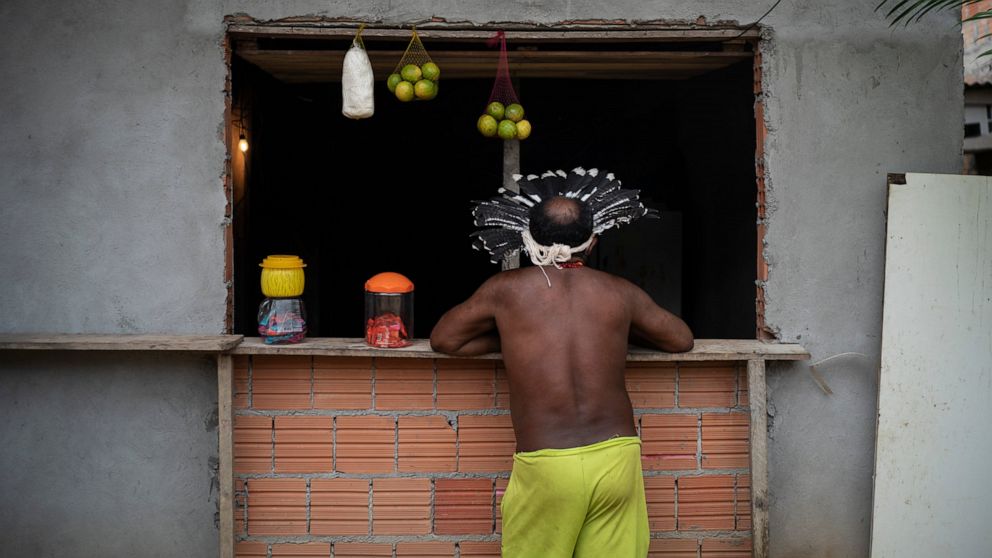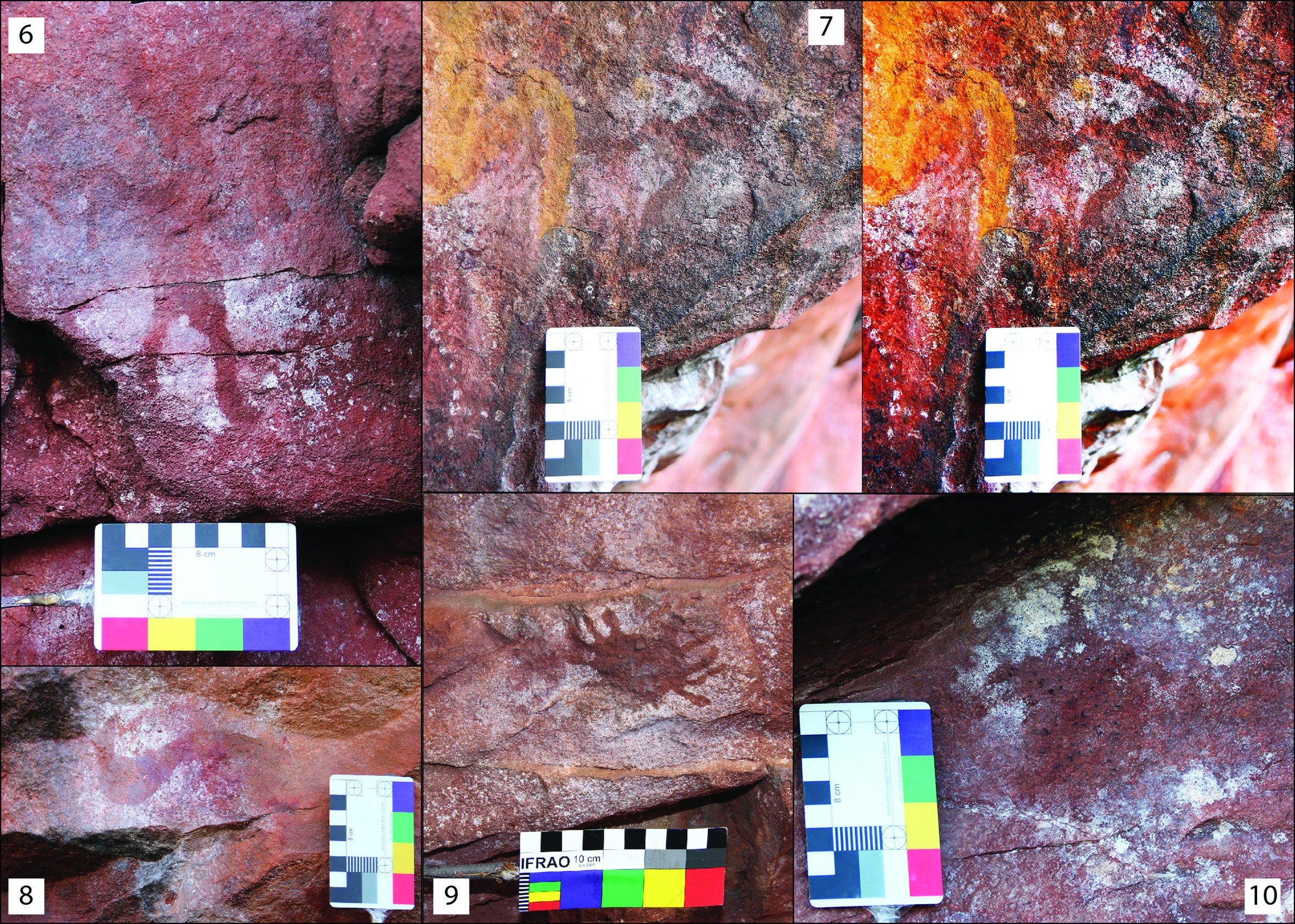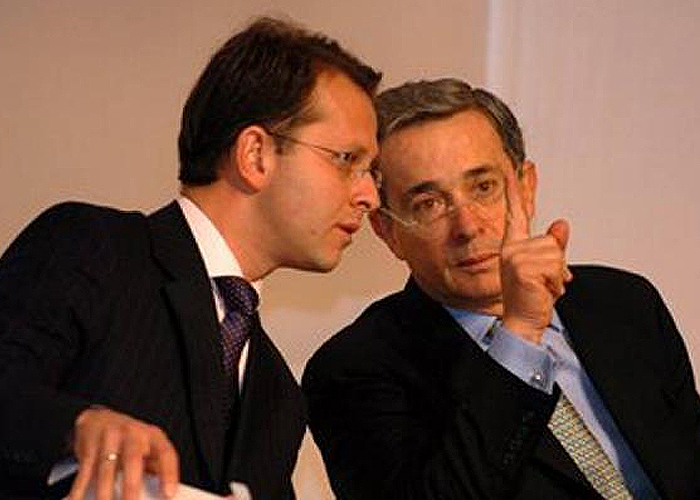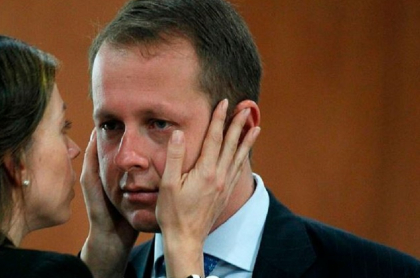Judi Lynn
Judi Lynn's JournalDani Garavelli: Cheerleader for race riots Donald Trump creates perfect smokescreen
To watch the footage of George Floyd dying at the hands of a white US police officer is to shudder at man’s capacity for brutality. For Derek Chauvin to have kept his knee on the man’s neck even after he had passed out, even as bystanders begged him to check his pulse, is an act of depravity.
By Dani Garavelli
Sunday, 31st May 2020, 7:58 am
Sadly, neither the barbarity, nor the racism that fuelled it, is new. Floyd is the latest in a long succession of African Americans to die at the hands of police officers. Some of their names are well-known: Michael Brown; Tyrone West, Tamir Rice, Freddie Gray; many more have faded into obscurity. But the toll keeps mounting. As Chauvin was squeezing the breath from Floyd in Minneapolis, protesters were demanding justice over the killing of Breonna Taylor, shot dead by police in her house in Louisville in March.
Nor are the riots that have swept the US entirely unexpected. It is common for police killings to light a touchpaper in cities with pre-existing racial tensions. As in Los Angeles after the attack on Rodney King, Baltimore after the killings of West and Gray, so too in Minneapolis, where the police precinct was set alight and, Louisville, where demonstrators were shot. The trouble follows a familiar pattern: peaceful demonstrations turn violent, and – once the city is in turmoil – opportunists start looting.
What is unprecedented is that the president should do so much to create the context for the killing and then seek to inflame the violence. When, 72 hours after Floyd’s death, Donald Trump called the protestors “thugs” and told Minnesota governor Tim Walz the military were with him all the way; when he tweeted, “when the looting begins, the shooting begins” – a phrase first used by Miami’s police chief Walter Headley during civil rights unrest in 1967 – he was playing to his volatile alt-right followers, in exactly the same way as when he defended the armed anti-lockdown supporters in the Michigan Capitol earlier in the month.
From the moment Trump announced his candidacy, he has been courting the white supremacist vote. He may have disowned David Duke, but if your slogan is Make America Great Again and you talk about walls and deporting Muslims, then you shouldn’t be surprised by a KKK endorsement. And if your response to the killing of a protester at a Unite the Right rally in Charlottesville is to suggest “there are fine folks on both sides” you legitimise that rally and justify the KKK’s faith in you.
Furthermore if you tell law enforcement officers not to be “too nice” to suspects, adding that it’s ok to allow them to bang their heads, then you share the responsibility when black suspects die as a result of excessive force.
More:
https://www.scotsman.com/health/dani-garavelli-cheerleader-race-riots-donald-trump-creates-perfect-smokescreen-2869754
Indigenous leader calls for help in Brazil's biggest reserve
As the coronavirus spreads into Brazil's indigenous lands, killing at least 40 people so far by the government’s count, the first two COVID-19 deaths were registered this week in the Xingu area, which is one of the biggest reserves in the world
By YESICA FISCH and MAURICIO SAVARESE Associated Press
May 27, 2020, 11:07 PM
3 min read

Pedro dos Santos, the leader of a community named Park of Indigenous Nations, stands outside a small market in Manaus, Brazil, Sunday, May 10, 2020. As the coronavirus spreads into Brazil's indigenous lands, the first two COVID-19 deaths were registered this week in the Xingu area, which is one of the biggest reserves in the world. (AP Photo/Felipe Dana)Pedro dos Santos, the leader of a community named Park of Indigenous Nations, stands outside a small market in Manaus, Brazil, Sunday, May 10, 2020. As the coronavirus spreads into Brazil's indigenous lands, the first two COVID-19 deaths were registered this week in the Xingu area, which is one of the biggest reserves in the world. (AP Photo/Felipe Dana)
The Associated Press
RIO DE JANEIRO -- As the coronavirus spreads into indigenous lands in Brazil, killing at least 40 people so far by the governmnt's count, the first two COVID-19 deaths were registered this week in the Xingu area, one of the biggest reserves in the world.
The two fatalities were in the Kayapo indigenous group, which has reported a total of 22 virus cases. The community's leader, Megaron, told The Associated Press he wants President Jair Bolsonaro and other officials to stop loggers, miners and fishermen from illegally entering the territory, incursions he believes have sped up the spread of the virus.
Bolsonaro has encouraged development in the Amazon, regardless of indigenous lands, although the state-run indigenous agency, FUNAI, issued an order in mid-March barring access to those lands because of the virus. Still, reports in Brazilian media have said missionaries, health care agents, loggers and miners carried the virus into those areas.
“It is not us that are leaving and taking (the virus). There are people seizing this disease to invade indigenous land,” Megaron said.
He received questions from AP on May 13, but his team wasn’t able to get his response back until Wednesday due to their remote location in Xingu, which covers more than 2,600,000 hectares (more than 10,000 square miles) in the middle of Brazil. It is home to more than 5,500 indigenous people of 14 ethnic groups.
More:
https://abcnews.go.com/Health/wireStory/indigenous-leader-calls-brazils-biggest-reserve-70919573
Miniature Rock Art Found in Australia May Have Been Stencilled by Children

By George Dvorsky on 27 May 2020 at 2:00AM
Archaeologists working at a rockshelter in northern Australia have discovered a trove of unusual miniaturised rock art made using stencils. This rare form of rock art may have served an ominous supernatural purpose – or it might be whimsical doodles made by children.
Nearly 60 small-scale stencils have been documented at the Yilbilinji 1 rockshelter at Limmen National Park in northern Australia. Rock art in which figures and objects are portrayed in miniature is exceptionally rare, with the only other two examples found at Nielson’s Creek in New South Wales and Kisar Island in Indonesia. The small-scale stencils at Yilbilinji 1 now comprise the largest collection of this kind of rock art in the world. Details of the research, led by archaeologist Liam Brady from Flinders University in Australia, will be published in the June edition of Antiquity.
The Yilbilinji 1 rockshelter is traditionally owned by the Maara Aboriginal people and was first documented by archaeologists in 1974. Three years ago, Brady and his colleagues performed an exhaustive survey of rock art at the site, resulting in the documentation of over 350 distinct artworks. The expedition was a collaborative effort, in which the archaeologists were assisted by park rangers and Marra Traditional Owners.

Samples of art found at Yilbilinji 1. (Image: L. M. Brady et al., 2020/Antiquity)
Of the 59 stencils found at Yilbilinji 1, 17 were classified as miniature or small-scale, in which the subject matter is “considerably smaller than life size or whose proportions are unrealistic when compared to full- or life-sized examples,” according to the paper.
The stencilled depictions included human figures, animals and animal parts (e.g. crabs, turtles, and kangaroo paws), boomerangs, shields, geometric shapes, and wavy lines. No dates were given for the stencils, but rock art in the region dates back for thousands of years.
More:
https://www.gizmodo.co.uk/2020/05/miniature-rock-art-found-in-australia-may-have-been-stencilled-by-children/
Brazilian taxpayers subsidizing Amazon-clearing cattle ranches, study shows
by Naira Hofmeister on 26 May 2020 | Translated by Maya Johnson
One in every 10 pieces of beef served up on Brazilian plates is paid for by tax dollars. The national beef industry is one of the most heavily subsidized by state and federal governments, to the tune of 12.3 billion reais ($2.2 billion) per year in the form of tax incentives, easy credit, and even debt forgiveness.
Even though it’s a multibillion-dollar industry — on March 25 this year, JBS, the world’s biggest meatpacking company, reported 6 billion reais ($1.1 billion) in profit for 2019, the best results in its history to date — the tax revenue it contributes to the Brazilian treasury, averaging 15.1 billion reais ($3 billion) per year, is small compared to the incentives.
That means that for every $1 collected in taxes from the beef sector, only 20 cents effectively goes to society; the rest goes back to the producers in the form of various benefits.
. . .
“These are the highest emissions per kilogram of meat produced,” said Roberto Strumpf, a biologist and environmental coordinator of the Instituto Escolhas study. “However, in absolute terms, the Amazon emits much more because it is more extensive and the fallen trees contain a much larger quantity of carbon.”
Three large meatpackers — JBS, Marfrig and Minerva — account for 42% of all cattle slaughtered in the Brazilian Amazon. And last year the Public Prosecutor’s Office said that, even with the responsibility agreements made by industry and retailers, it is impossible to assure beef production without deforestation when ranching takes place in forested areas.
More:
https://news.mongabay.com/2020/05/brazilian-taxpayers-subsidizing-amazon-clearing-cattle-ranches-study-shows/
~ ~ ~
APRIL 28, 2020 / 2:07 PM / A MONTH AGO
Brazil's JBS praises Trump order to keep meat plants open
Nayara Figueiredo
2 MIN READ
SAO PAULO (Reuters) - U.S. President Donald Trump’s planned executive order to keep that country’s meat plants open will bring certainty to the sector, an executive for Brazilian meatpacker JBS SA said on Tuesday.
JBS Chief Financial Officer Guilherme Cavalcanti praised Trump’s decision in a live webcast, after saying the United States only has about 15 days of meat inventory.
Trump plans to issue the executive order on Tuesday, a senior administration official said. The five-page order is designed to give companies more liability protection in case employees catch the virus as a result of having to go to work.
. . .
Cavalcanti said that, JBS has idle capacity in Brazil and Australia that can be directed toward meat exports to the United States if necessary.
https://www.reuters.com/article/us-jbs-outlook/brazils-jbs-praises-trump-order-to-keep-meat-plants-open-idUSKCN22A337
Colombia's ruling party again inciting harassment of journalists
by Adriaan Alsema May 25, 2020
Colombia’s ruling party on Sunday began another attack against journalists, this time targeting the director of one of the country’s most renowned television news programs.
The latest attack was initiated by one of the attorney’s of former President Alvaro Uribe, the leader of the far-right Democratic Center party, and quickly supported by party leaders.
The victim this time was Cecilia Orozco, the director of Noticias Uno and a columnist of newspaper El Espectador, who has been at the forefront of exposing corruption.
Uribe, his party and the government of President Ivan Duque have become increasingly aggressive against independent press that has revealed the president’s alleged involvement in rigging the 2018 elections, and the former president’s ties to paramilitary groups and the Medellin Cartel.
More:
https://colombiareports.com/colombias-ruling-party-again-inciting-harassment-of-journalists/
Colombia's military mafia threatening police investigators: report
by Adriaan Alsema May 24, 2020
The mafia that has infiltrated Colombia’s military has been sending death threats to police officials who are investigating them, newspaper El Espectador reported on Saturday.
The death threats sent to the officials’ Whatsapp indicate that the military mafia has identified the investigators examining evidence found during a raid in two military intelligence offices in December last year.
These raids revealed that corrupt military officials had been wiretapping on the Supreme Court, journalists, NGOs and politicians, weekly Semana reported in January.
First the journalists, now the police
The criminal infiltrators made it clear to the investigators of the National Police’s intelligence unit DIJIN, which is carrying out the investigation, that the families of the police officials have also been shadowed.
Don’t look for anything in the Army Command, making public what you found in the raid and the media know about is enough. Enjoy your lives, those twins, your family. Your wife is a very good accounting student, enjoy your Renault Simbol (sic) car, your daughter and your ex-cop wife.
Death threat
More:
https://colombiareports.com/colombias-military-mafia-threatening-police-investigators-report/
Cuba Has Sent 2,000 Doctors and Nurses Overseas to Fight Covid-19
The Trump administration describes Cuba’s medical response teams as “slaves”—we asked the doctors for their take.
By Ed Augustin MAY 22, 2020
Havana—As the novel coronavirus encircled the globe, tearing through health care systems, heavily affected countries sent out pleas for doctors. One small, downtrodden island answered the call.
Cuba has sent more than 2,000 doctors and nurses to 23 countries since the crisis broke.
Emergency medical response teams from the island have touched down in Latin America, Africa, the Middle East, and—for the first time—Europe. In March, the first batch of 51 Cuban doctors and nurses arrived in Lombardy, Italy, at the time the epicenter of the pandemic, to cheering crowds.
They join the 28,000 Cuban health professionals who were working in 59 countries prior to Covid-19.
No other country has sent large numbers of doctors abroad during the pandemic. The radical intellectual Noam Chomsky last month described the island as the only country to have shown “genuine internationalism” during the crisis, and the women-led anti-war organization Code Pink is now leading calls for the island’s emergency medical response teams to be awarded the Nobel Peace Prize. But these medical brigades have received little media attention in the United States. When they are commented on at all, coverage is usually negative.
In fact, for the last three years, the Trump administration has described doctors participating in these missions as “slaves” and has accused the Cuban government of “human trafficking.” At the same time, Trump officials have suggested that tens of thousands of those “on mission” are not doctors at all but regime henchmen deployed to “sow political discord” and spread the virus of communism. Cast in this light, Cuban doctors are at once victims and oppressors.
More:
https://www.thenation.com/article/world/cuba-doctors-covid-19/
Also posted in Editorials and other articles:
https://www.democraticunderground.com/1016256353
Bolivia: Armed Forces Threaten Senate and Demand Promotions
The U.S.-backed regime could be conspiring with the Armed Forces to suspend the elections through a "self-coup d'etat."
Bolivia's Senate President Eva Copa Friday denounced that the Armed Forces Commander General Sergio Orellana gave lawmakers a week-long ultimatum to ratify their promotions.
"If they do not comply with our request, the Armed Forces commander-in-chief will approve the promotions, as our regulations establish," Orellana said.
According to Telesur's correspondent in Bolivia Freddy Morales, however, this threat is very irregular given that only the Senate has the authority to ratify promotions.
"Bolivia could be on the verge of a joint plan between the Armed Forces and the government to organize a self-coup, as Senate President Eva Copa warned this week," Morales said.
The main target of this likely self-coup could be the Legislative Branch, which is controlled by the Movement Toward Socialism Party (MAS).
More:
https://www.telesurenglish.net/news/bolivia-senate-rejects-armed-forces-ultimatum-and-threats-20200522-0004.html
Corn connects many generations of Maya
18 May 2020
That corn was highly important in the Maya culture is something that Genner Llanes Ortiz, himself a Maya from the Mexican province of Yucatan, has always known, right from his childhood. But just how important the role of corn is in the collective memory of his people, is one of the subjects of his research.
Llanes Ortiz’s fasciation for the role of corn in Maya culture started around ten years ago. As an anthropologist at the Faculty of Archaeology in Leiden, he noticed how many corn festivals there were in Mexico and that the Maya tradition of praying for the cornfields had grown into mass prayers at these festivals, even when the festivals were held in city centres. He is so fascinated by the topic that it is now the subject of a widescale research project heis working on. By studying the Maya's relationship to corn in the past and the present, he hopes to gain insight into how the Mayas handle their cultural heritage, how they pass on their culture and what it means for them in the present day.
Corn has a rich tradition in the cuisine of Latin America. The number of dishes using corn - even in Mexico alone - is immense. And there is an enormous variety of types of corn - around 60. They all originate from that one plant, teosinte, a Mexican type of grass from which the Maya cultivated corn 8,000 to 14,000 years ago. Biologists have already reconstructed how they turned this weed into an edible plant, but how corn then spread among all the indigenous peoples in South and North America is still a mystery.
Llanes is fascinated by it, and by the social memories that the Maya people share about the cultivation of corn. For the Maya, corn is more than a food product, it is sacred. According to the Maya creation story, they were actually created from corn: fashioned from cornflour. And corn still plays an important religious and spiritual role in the lives of Maya people.
Archaeologists have mainly concerned themselves with the classical Maya heritage. The history of the native peoples received little attention, partly because so few records were kept. 'But the fact that there's no written history doesn't mean that nothing was passed on. That did happen, in the form of drawings, plays and images.'
Culture destroyed
Llanes is quick to add that the Maya do have a written history. They used hieroglyphs to record their religious stories, history and astronomy insights in images and in books. However, the books were systematically destroyed by the colonisers during the inquisition. 'Colonisation marginalised the memories of the Maya. Much of their culture was destroyed, and that has had an impact on how their history has been handed down. Things didn't get much better after the colonisation period either. But, with my research on corn, I want to delve into the collective memories, which may help to restore these memories.’
More:
https://www.universiteitleiden.nl/en/news/2020/05/leidraad---corn-and-the-mayas
Colombia grants convicted politicians right to appeal Supreme Court sentences

Andres Felipe Arias.
by Adriaan Alsema May 22, 2020
Colombia’s Constitutional Court allowed politicians convicted by the Supreme Court without appeal after 2013 to retroactively claim this right.
The sentence followed a writ by former Agriculture Minister Andres Felipe Arias, who was sentenced to 17 years in prison in 2014 over the misappropriation of $25 million in agricultural subsidies.
While granting Arias his right to appeal, the court stressed that the sentence remained valid and the former minister must appeal his sentence while imprisoned.
Until a reform in 2018, privileged crime suspects like ministers, lawmakers and governors were tried and sentenced by the Supreme Court without the right to appeal.
Arias initially fled to the United States to evade imprisonment, but was sent back to face justice after a US judge rejected the former minister’s claim he was the victim of political persecution.
More:
https://colombiareports.com/colombia-grants-convicted-politicians-to-appeal-supreme-court-sentences/





Arias, seeking consolation from his dramatic wife.




Arias and the missus chewed up nearly all the scenery any time the cameras were near
when he was found guilty.
Profile Information
Member since: 2002Number of posts: 160,530